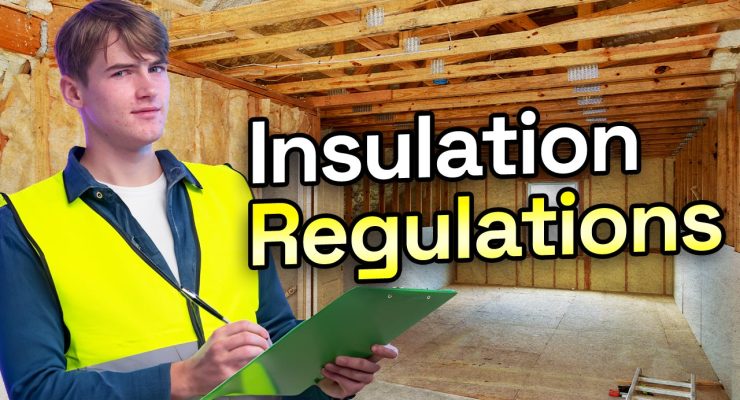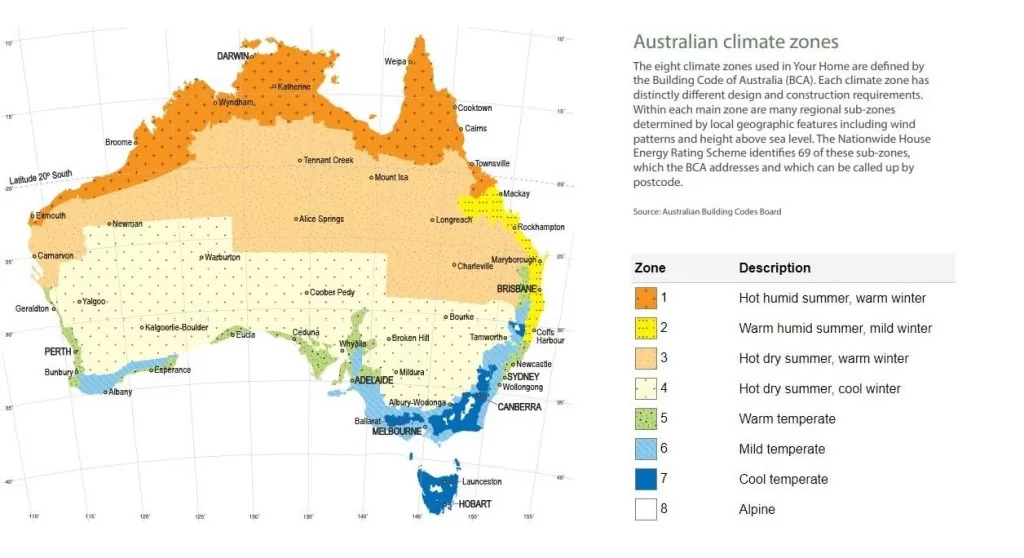
Fast read
A room's insulation is crucial to attaining and sustaining a desired temperature in a home or business. The Building Code of Australia (BCA) is in charge of regulating insulation standards for new buildings. But as of 2022, no means are set on existing developed buildings.
The BCA has set out and created a scale of R-Value and has given us requirements for different climatic zones. This means each state and territory has its own exclusions. The R-value is a measurement of a material's resistance to heat flow. The higher the R-value, the better the insulation.
Consulting with a local expert is advisable to ensure the correct type and amount of insulation are installed.
Is insulation for homes and businesses regulated in Australia?
Insulation in a home or business is smart because you literally stop the money for heating or cooling rushing out of the dwelling. The more insulation you can put into the roof or wall, the better the thermal properties of the building.
With insulation and triple-glassed windows, condensation issues and a lack of fresh air are now. But we do not have this issue in how Australian and NZ buildings are created.
Many Australian homes, especially for the rental market, are sweat boxes in summer and freezing ice blocks in winter. This means renters often already comprise a higher proportion of the lower socio-economic class and have to spend a large amount of their hard-earned funds to make such rental places liveable.
So why does the Federal Government not force landlords to comply with insulation regulations for rental properties? For too long, it’s been in the too-hard basket. So for existing buildings, there are no mandatory standards, while for new buildings, there are specific standards.

Insulation rules are complex and vary from State to State
The laws governing insulation for homes and commercial businesses under the Building Code of Australia (BCA) are intricate. They incorporate standards for ventilation. As well as other associated rules, which indicate what R-value specific insulation must have for certain parts of the building.
Also, Australia is separated into several different climatic zones for the sake of insulation laws. Each temperature zone has its own insulation criteria to complicate matters.
In addition, various states and territories have their own set of exclusions to the BCA. So make sure you add the correct level of insulation to the right part of the building. The help of a local insulation expert will assist greatly.

Image Source: Building Code of Australia (BCA)
To understand how insulation works and as a reference to the building code of Australia, which prescribes certain R-value insulation for certain sections of the building, below is a clear explanation of what the R-value means.
What is the R-value in insulation?
The R-value, as displayed on different insulation types’ packaging, indicates this product’s resistance to heat flow. The higher the R-number, the more this product will stop heat from travelling through it. Usually, insulation material that protects from higher heat inflow will also perform better to protect against the cold.
Higher R-value
How much insulation one seeks to add to a roof cavity or external wall cavity often depends on the surrounding environment. For example, a double brick wall will have by itself already a much better R-value than a weatherboard wall. So one would add a higher R-value to the weatherboard wall to achieve an acceptable outcome.
An overall R-value for buildings adds the R-values of the applied insulation to the R-value of the existing building materials such as ceilings, walls, and flooring.
Given the increasing energy costs, if one is already in the process of adding insulation. It is strongly recommended to go for the highest possible R rating. The total R-values are the greatest measure of the insulation performance of your home.
The money one spends initially on the thicker Rockwool, for example, will have an extremely favourable ROI over the life of the building. So if you built a new home, go and surpass the minimum R-value standards specified and make your home an energy fortress.
Where to go from here?
Determining what temperature zone you’re in and what sort of house you need to insulate is the first step in following the regulatory standards.
This will help you determine what R-values you’ll need to install for different portions of your house. These R-value goals aren’t achieved just through insulation. The entire structure of the building is assessed. Considering the contributions of each element, such as a) brick wall, b) air gap, c) insulation & stud wall, d) 13 mm gyprock, etc., to gain the total R-value.
Windows, entrances, or other heat bridges are seen as subtractions from the R-value; this is why it’s critical to get the insulation requirements calculated by experts and installed according to the manufacturer’s standards. If you don’t, you could discover that while fulfilling the building regulation criteria on paper.
The building envelope
Overall, the building envelope must be created in such a way that the insulation in your home is adequately compliant with
- Part 3.12 of the Building Code of Australia Housing Provisions (BCA)
- AS/NZS 4859.1 – Materials for the thermal insulation of buildings
Furthermore, State governments, in addition to the BCA, have their own set of regulations to follow. These differ from the BCA’s standards. This means you, your architect, or your expert have to do your own research. Based on your location, ensure you comply with state and overall regulations.